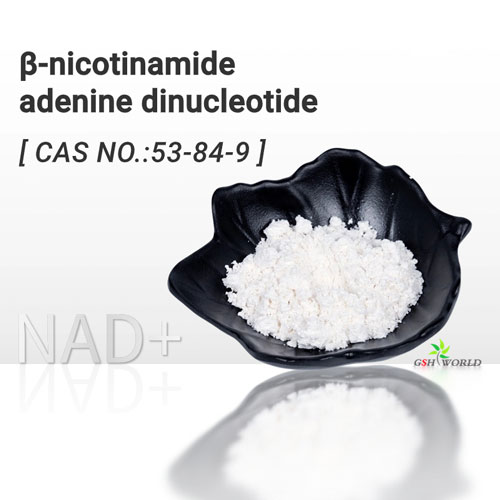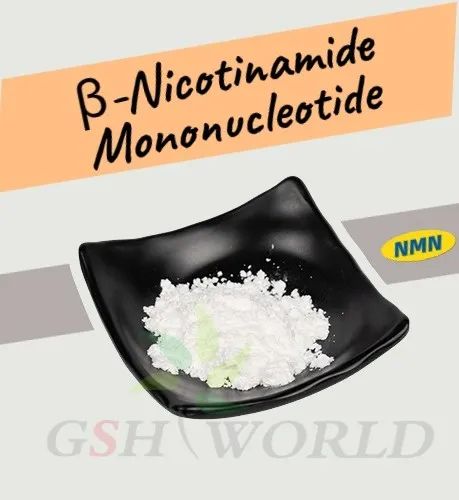From the research results, we know that NAD+decreases with age, and various basic studies have shown that preventing this reduction may manage aging, and oral intake of NMN may prevent the decrease of NAD+.
Next, we will introduce what NAD+ is and what benefits does increasing NAD+through NMN have for muscles?


What is human NAD+?
NAD+is an important component of the body, second only to ATP, the currency of energy in living organisms.
This is a substance used in the process of breaking down sugars to produce ATP, and in addition, it is also used to repair damaged genes.
The body is made based on tryptophan, a type of amino acid, and vitamin B3 (niacin, niacinamide). The most important factor in synthesizing NAD+is the enzyme that synthesizes NAD+from nicotinamide, also known as NAMPT.
Enzymes that work throughout the body, such as the brain, muscles, and digestive tract, decrease with age, leading to a decrease in NAD+synthesis and becoming the cause of NAD+reduction.
On the other hand, there is also an enzyme called CD38 that decomposes NAD+. This decomposition effect increases with age, resulting in a decrease in NAD+levels in various tissues. As age increases, it can cause a decrease in the function of various tissues.
Clinical study of NMN on muscle growth
In human clinical trials, NMN dietary supplements, the precursor of NAD+, orally supplemented to determine how the body maintains NAD+.

Targeting individuals with mitochondrial abnormalities, consuming NMN at a rate of 750-1000 mg/day for 10 months.
In the population with mitochondrial abnormalities in the production factory of energy currency ATP, the NAD+levels in blood and muscle are lower than those in healthy individuals. However, due to the intake of NMN, the reduced NAD+levels in muscle increase by 2.3 times and in blood increase by 8.2 times.
Research findings
Increasing this NAD+in individuals with mitochondrial abnormalities can lead to a decrease in muscle strength due to the body, resulting in a tenfold increase in abdominal muscle strength, a 2.5-fold increase in upper arm muscle strength, and a 2-fold increase in back muscle strength.
Through the uptake of NMN, the reduced number of mitochondria itself is also increasing, and it has found that increasing NAD+leads to changes that can generate more energy.
The research results indicate that increasing NAD+through NMN leads to an improvement in muscle performance.
That is to say, due to the increase of NAD+, the mitochondrial function in muscles improved, which can generate more energy, resulting in an increase in muscle strength.
Starting from the age of 30, the loss of NAD+in the body will enter an accelerated period.
As the aging human body cells autonomously synthesize NAD+, the synthesis ability limited in two aspects: first, the amount of raw materials, i.e. the content of NAD+precursors, and second, the synthesis efficiency.
NMN15000 completes the NAD+salvage pathway cycle and maintains intracellular methyl levels through component recombination. Maintain stable operation of the synthesis and metabolism pathways of NAD+.
The activities of NMNAT and NAMPT transferases, as well as the number of methyl groups in the human body, maintained at a stable level.

Using mold directed evolution technology and whole fermentation method for extraction. There are comprehensive requirements and strict supervision in terms of raw materials and production standards, purity requirements, and testing methods.
The third-generation sustained-release technology continuously releases for 24 hours, and small molecule peptides have better biological activity and higher absorption and conversion rates
Clinical research on increasing NAD+through exercise
In addition to using NAD+precursors as a supplement, research has also published on the effectiveness of resistance training in improving muscle NAD+.
The purpose of resistance training is to train muscles under relatively heavy loads to achieve higher muscle effects, using commonly used machines in gyms such as leg presses, bench presses, and cable pull-down machines.
A study was conducted on 16 middle-aged human beings aged around 59, who were trained twice a day per week for 10 months to investigate their impact on muscle strength and changes in NAD+levels.
As a result, after 10 months of training, the muscle weight around the thighs increased, not only enhancing muscle strength, but also increasing the NAD+concentration in the muscles by about 2 times compared to before training. Due to this increase, the NAD+levels in the muscles of middle-aged participants returned to the same level as those of young college students.
At this point, the amount of NAD+synthase NAMPT in the muscles increased by 15%, and exercise led to an increase in the amount of NAMPT, which may be due to an increase in NAD+levels.
summarize
NAD+is an important glycolytic system that immediately produces energy after muscle breakdown of sugar, and is also an essential substance in reducing the occurrence of fatigue caused by lactic acid reactions.
The clinical study introduced this time suggests that increasing the amount of NAD+through exercise can lead to an improvement in muscle efficiency.
Training muscles is not just a quantitative change in muscle hypertrophy, but also a qualitative change in the ability to produce more NAD+by transforming oneself into stronger and longer muscles.



